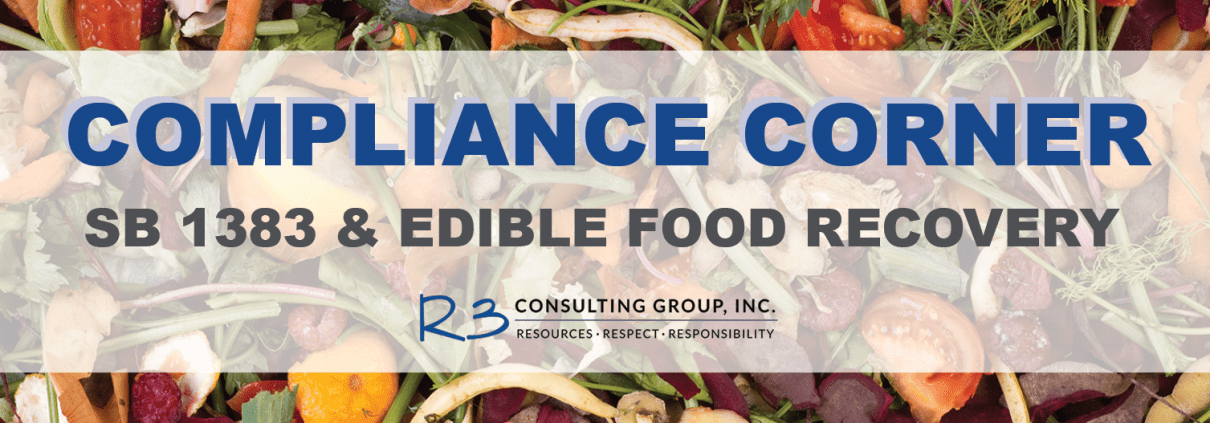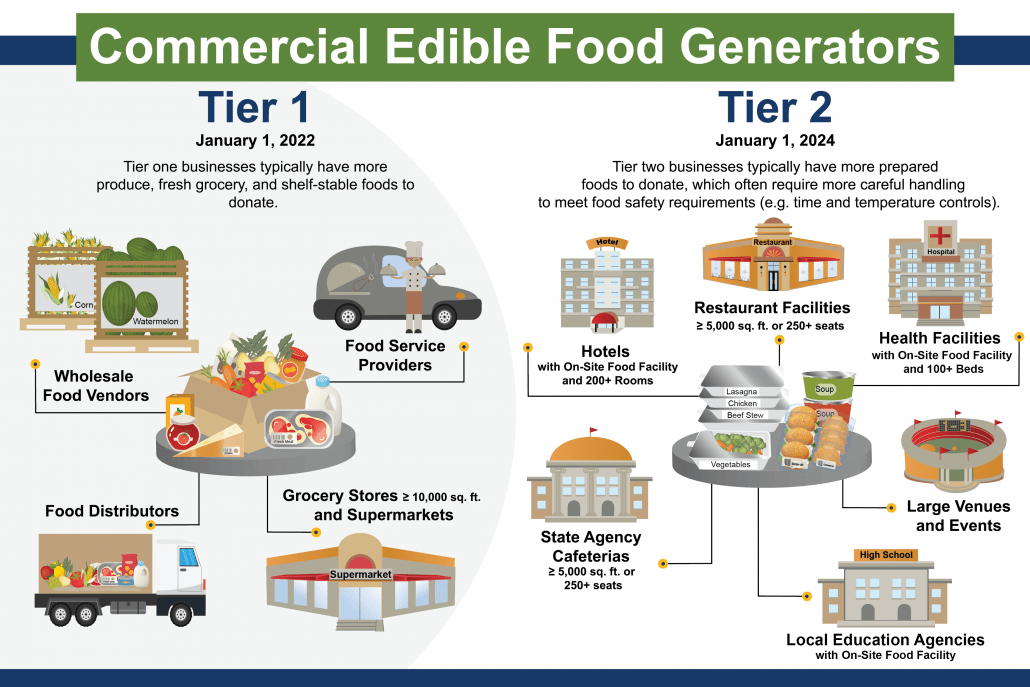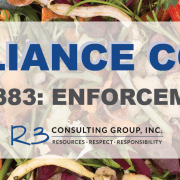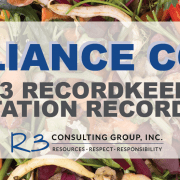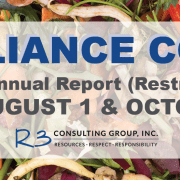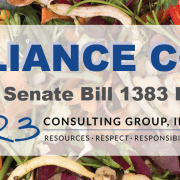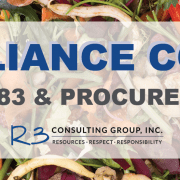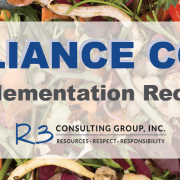Compliance Corner – April 2022
Did you know April has been federally declared food waste awareness month?
We all know about and love Earth Day, TODAY, right?!
Stop Food Waste Day is also coming up (April 28)!
Seems only fitting that this post is focused on SB 1383’s Edible Food Recovery requirements!
April 2022 – Edible Food Recovery
This month focuses on Edible Food Recovery and all the work jurisdictions will need to do in order to identify, educate, and inspect commercial edible food recovery generators, as well as establish an Edible Food Recovery program in your city, town, district, or County.
Who Are Tier 1 and Tier 2 Generators?
Tier 1 and 2 generators are the entities identified by CalRecycle as required to donate food under SB 1383. For Tier 1, this began January 1, 2022 and for Tier 2, they will need to begin donating food January 1, 2024.
Identification
Jurisdictions are required to have identified the Tier 1 and 2 generators in their jurisdiction by January 1, 2022. However, this is no easy feat! If you are just beginning the process or looking to refine your list, using a variety of different data sources can help narrow down your generators.
R3 recommends the following resources for identification:
- Environmental Health Data from your County
- North American Industry Classification System (NAICS)
- California Department of Public Health
- CalRecycle Convenience Zone Status – for Supermarkets
- Internet Research – for hotel room counts, square footage of restaurants (via real estate websites)
- Institutional Knowledge – for large venues and events
Annual Education and Inspections
More information on Annual Education and Noticing can be found here!
Jurisdictions are not required to inspect a minimum number of Tier 1 generators (Tier 2 begins in 2024) each year, however, a jurisdiction should determine a target number of generators to visit each year and who will be responsible for the inspections.
When on-site, you should look for two requirements:
- Does the generator have a copy of the written contract(s) it has with a food recovery organization(s)?
- Does the generator maintain records of the following information?
- The name, address and contact information of the service or organization.
- The types of food that will be collected by or self-hauled to the service or organization.
- The established frequency that food will be collected or self-hauled.
- The quantity of food collected or self-hauled to a service or organization for food recovery (in pounds recovered per month).
Reporting
Jurisdictions need to store the following information about their Edible Food Recovery program in the Implementation Record.
More information on Inspections and Recordkeeping can be found here!
Tips for a Successful Edible Food Recovery Program in your Jurisdiction
Food insecurity and recovery is rarely an issue defined by jurisdictional boundaries. Therefore, it is important to coordinate on a regional basis (R3 suggests county-wide) to learn who is recovering food in your area, where food is collected and distributed, and way to support additional recovery work. Many jurisdictions are looking to their counties or regional Joint Powers Authorities (JPAs) to work together on edible food recovery efforts through coordinated meetings, education, and/or inspections.
Cities and towns should also work with their counties through the edible food capacity study – due to CalRecycle on August 1, 2022 from all counties in the state. Counties may reach out you to work in tandem to identify gaps in edible food capacity in your area and ways to increase future capacity for all Tier 1 and 2 generators.
Helpful Links:
- https://www.calrecycle.ca.gov/Organics/SLCP/education
- https://calrecycle.ca.gov/organics/slcp/foodrecovery/
- https://calrecycle.ca.gov/organics/slcp/foodrecovery/jurisdictions/
- https://calrecycle.ca.gov/organics/slcp/foodrecovery/donors/
- https://calrecycle.ca.gov/organics/slcp/foodrecovery/organizations/
- https://calrecycle.ca.gov/organics/slcp/foodrecovery/capacityplanning/

